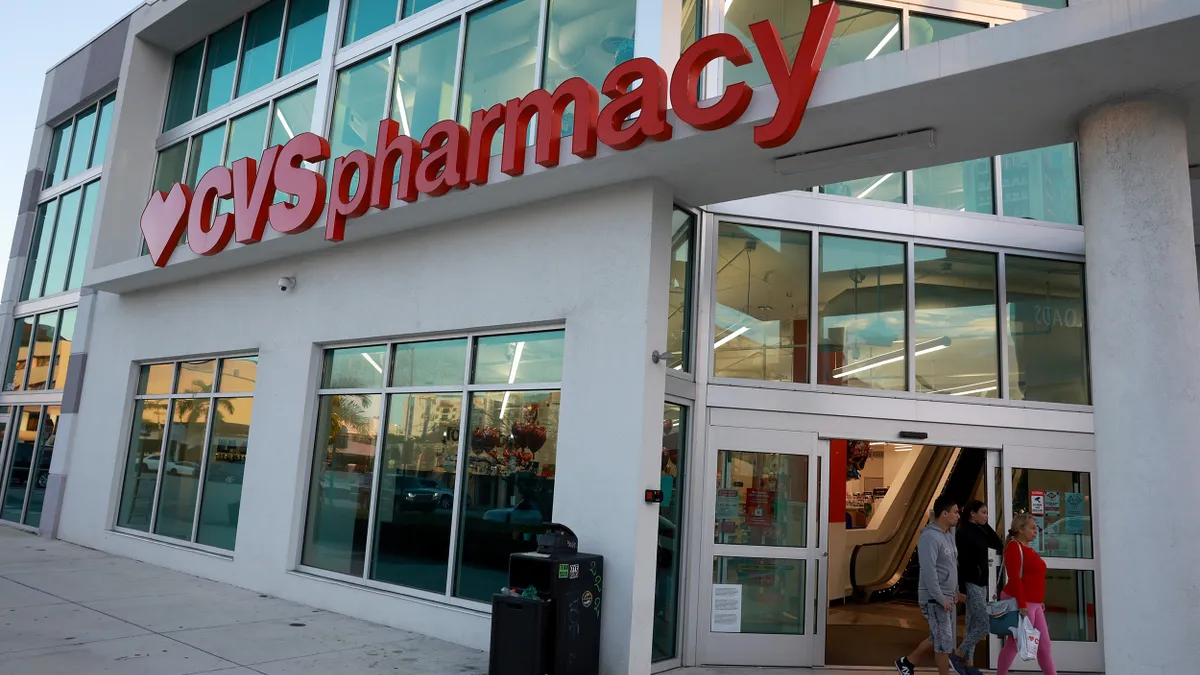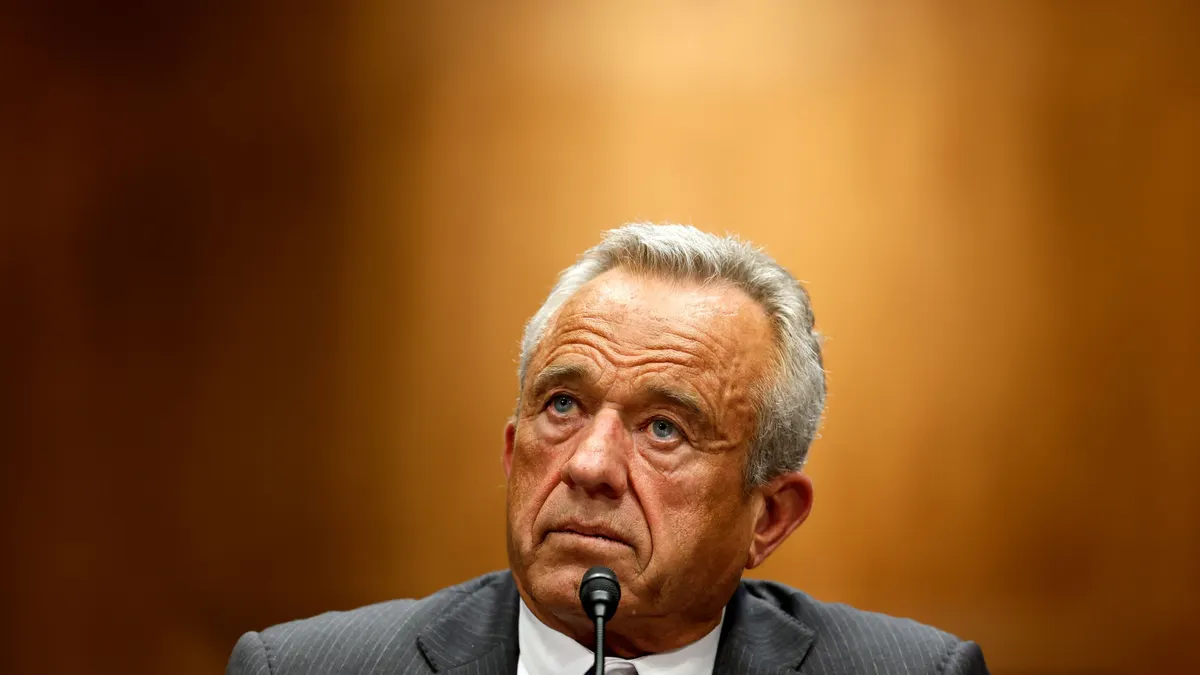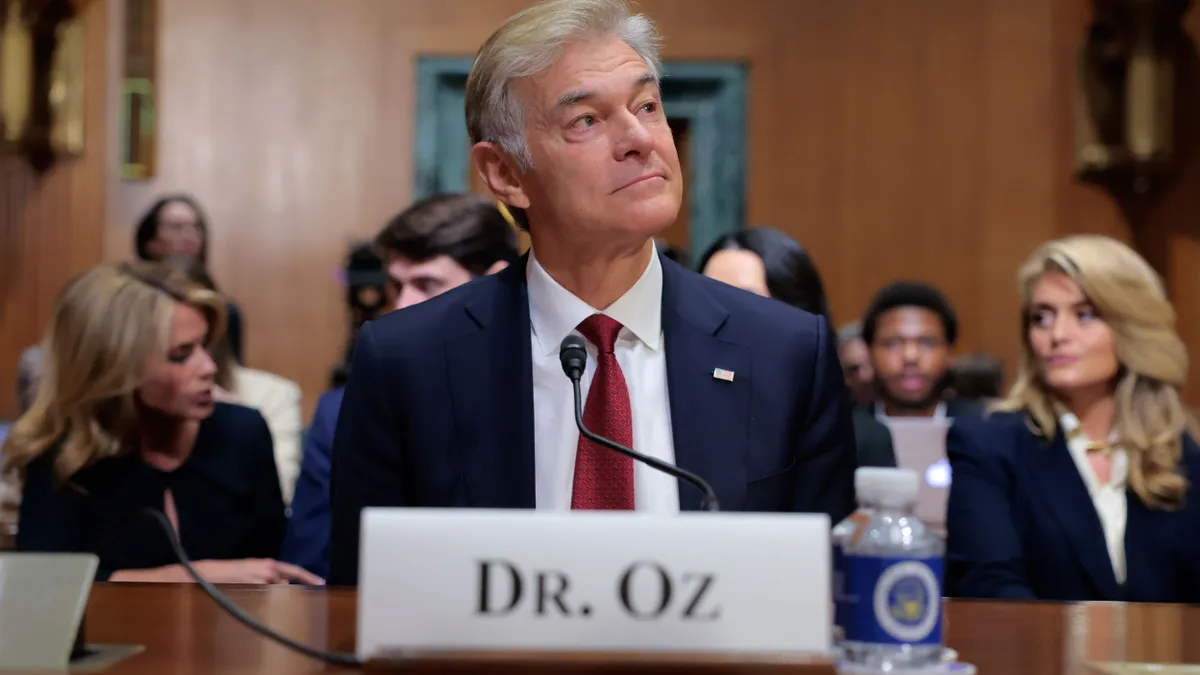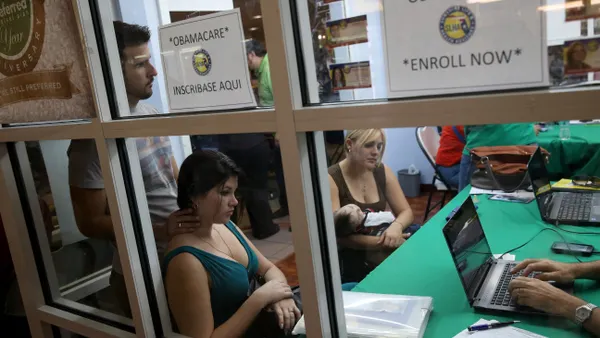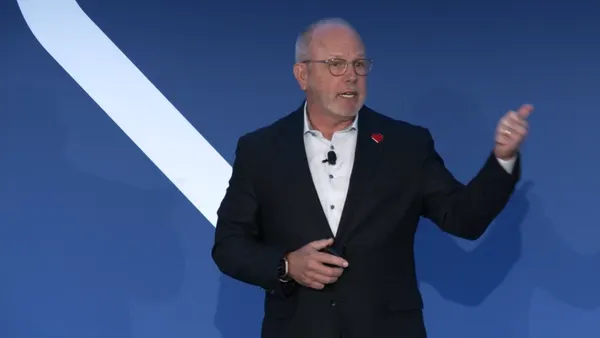Dive Brief:
- CVS Health raised its earnings expectations for 2025 after the healthcare behemoth’s Aetna health insurance and pharmacy units improved their performance in the third quarter.
- CVS now expects full-year adjusted earnings between $6.55 to $6.65 per share, up from its previous guide of between $6.30 to $6.40 per share, according to financial results released Wednesday.
- However, the company swung to a loss in the third quarter, driven by a $5.7 billion goodwill impairment charge linked to CVS’ healthcare delivery assets — particularly its move to decelerate growth of its Oak Street Health senior care clinics, CEO David Joyner said on an earnings call Wednesday morning.
Dive Insight:
CVS beat Wall Street expectations on earnings and revenue in the third quarter, overall a “positive step” for the healthcare giant even as it faces headwinds, J.P. Morgan analyst Lisa Gill wrote in a Wednesday note.
The company has been in the midst of a turnaround effort at Aetna after the insurer faced a shaky 2024 hampered by heightened medical spending in government programs.
CVS’ payer peers have also struggled this year with increased medical costs in government programs like Medicare Advantage, Medicaid and the Affordable Care Act exchanges. Insurers offering ACA plans are also facing significant policy uncertainty stemming from potential expiration of more generous subsidies for low- and middle-income enrollees set to expire at the end of the year.
CVS is more insulated from ACA woes, as the company plans to exit the individual exchanges for 2026. Meanwhile, the healthcare giant is seeing improved performance across Aetna, which drove CVS to boost its 2025 earnings guidance.
Aetna’s revenue of almost $36 billion in the third quarter was up more than 9% year over year. The division brought in $53 million in operating income in the third quarter, compared to a loss of $1.2 billion same time last year.
The improvement was driven by better performance in its government businesses, the healthcare giant said.
The unit’s medical loss ratio — a key marker of spending on patient care — fell to 92.8%, compared with 95.2% in the same quarter last year.
“We believe this momentum will carry into not only the fourth quarter, but 2026. So we’re going to lean into that momentum,” Aetna President Steve Nelson said during the call. “Having said that, we’re obviously respectful of the high trend environment, and it’s the first year of a multi-year recovery.”
However, CVS’ health services segment, which includes its massive pharmacy benefit manager Caremark and healthcare delivery assets, faced challenges in the quarter.
Though revenue increased by nearly 12% year over year to $49.3 billion, the division posted an operating loss of $3.9 billion, down from income of $2.1 billion same time last year, due to the impairment charge.
CVS said the writedown stems from reducing the number of new primary care clinics it plans to open starting next year. The company also expects to close a number of Oak Street clinics.
CVS decided to shutter underperforming clinics where the healthcare giant didn’t “see a reasonable path to sustainable margins,” CFO Brian Newman said on the call.
On an adjusted basis — without the writedown — health services’ operating income still fell, from $2.2 billion to $2.1 billion year over year.
Still, the healthcare delivery business’ performance in the third quarter was in line with CVS’ expectations, according to Joyner.
“Despite this update, value-based care remains a critical component of our strategy,” he said. “The reasons to believe in this business have not changed, but the marketplace is evolving, and we are adapting our strategy to get financial performance back in line with our expectations.”
Overall, CVS recorded revenue of $102.9 billion in the quarter, up nearly 8% year over year and a record high for the company.
CVS posted a net loss of almost $4 billion, compared with income of $71 million same time last year.



